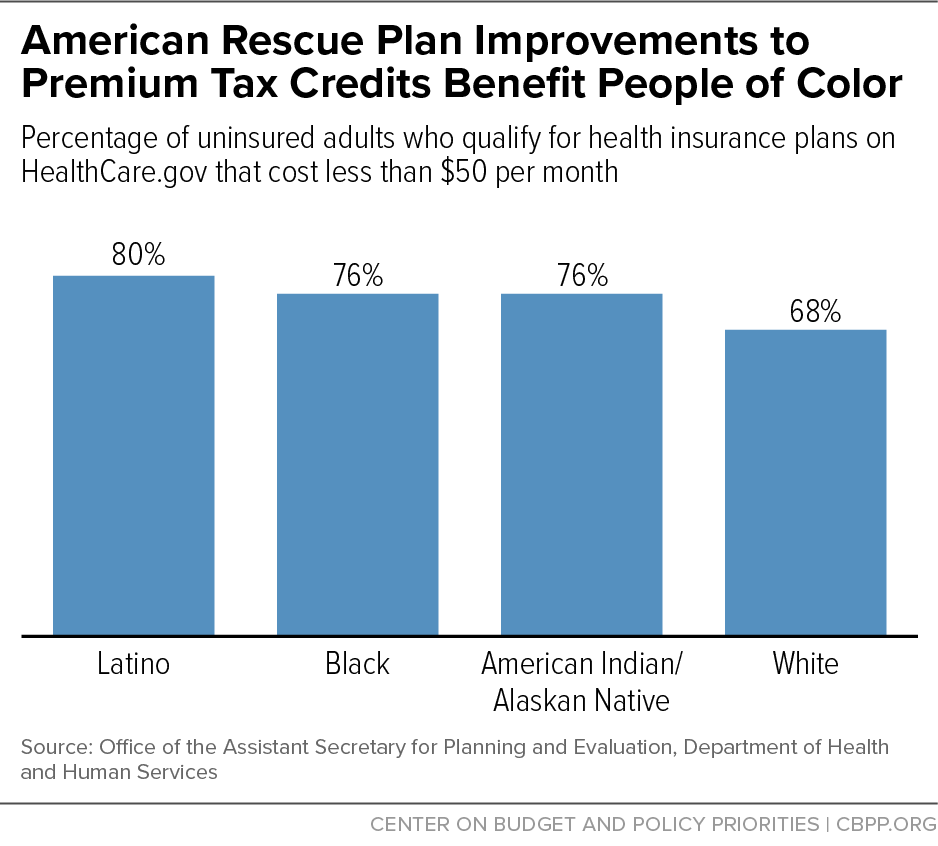más allá de los números
More Reasons Than Ever to Sign Up for Health Coverage During Open Enrollment
People who need health coverage for 2022 can now check out their options on the federal marketplace (known as HealthCare.gov) or their state marketplace. During this year’s annual open enrollment period, which begins today and runs through January 15, 2022, people have more time to enroll, more one-on-one enrollment assistance, and, most importantly, the lowest-cost health insurance options ever available through the marketplace. These factors set the marketplace up for success in 2022.
The American Rescue Plan, enacted in March, improved the affordability of health insurance plans available on HealthCare.gov and state marketplaces for 2021 and 2022, and the House Build Back Better legislation would extend these improvements. The Rescue Plan significantly increased a federal subsidy, known as a premium tax credit (PTC), that substantially lowers monthly health insurance costs for people with low and moderate incomes. The Rescue Plan also extended these federal subsidies to 3.7 million people who face high premiums as a share of their income, but were previously ineligible because their income exceeded 400 percent of the poverty line ($52,000 for a single person). These changes have reduced monthly premiums for most marketplace-eligible people.
Given the reduced premiums, about 11 million people who are currently uninsured could buy a health insurance plan on HealthCare.gov for 2022 that costs less than $50 per month, with 62 percent of that group potentially eligible for a zero-dollar plan. These PTC improvements are especially important for people of color, who make up a disproportionately high share of the uninsured population, likely due to structural barriers that have increased their likelihood of working in lower-paid jobs that often lack health insurance. Under the Rescue Plan, Black, Latino, and American Indian and Alaskan Native uninsured adults are more likely to qualify for plans that cost less than $50 per month (at 76 percent, 80 percent, and 76 percent, respectively) than their white counterparts (68 percent). (See graphic.)
People who were already enrolled in a HealthCare.gov plan have also benefitted greatly from the Rescue Plan’s lower premiums. Prior to these changes, about 8 out of 10 enrollees could buy a 2021 plan for under $50 per month, but with the Rescue Plan’s PTC enhancements, that share has risen to nearly 9 out of 10. More than three-quarters of current enrollees now have access to a zero-dollar plan.
Given these affordability improvements, current enrollees should return to HealthCare.gov or their state marketplace during open enrollment to update their application and compare plan options to get the best deal available to them. In prior years, enrollees who returned to the HealthCare.gov to compare their options paid 38 percent less on average per month than consumers who let their coverage renew automatically.
To expand access to coverage, the Biden Administration announced in September that the open enrollment period will be extended an additional 30 days and will now run through January 15, 2022, giving people more time to enroll in a plan on HealthCare.gov. State marketplaces’ open enrollment periods may differ. People who are eligible for Medicaid can enroll at any time during the year.
Enrollment in health insurance can be confusing, and nearly 65 percent of the uninsured population still have little to no awareness of the availability of federal subsidies that would allow them to enroll in affordable coverage. With that in mind, the Administration is also broadly expanding the availability of one-on-one enrollment help through a $91.5 million investment in the navigator program ― the highest level of investment in the enrollment assistance program’s history. People can find free, local help on the Get Covered Connector, at HealthCare.gov, or on their state marketplace’s website.

